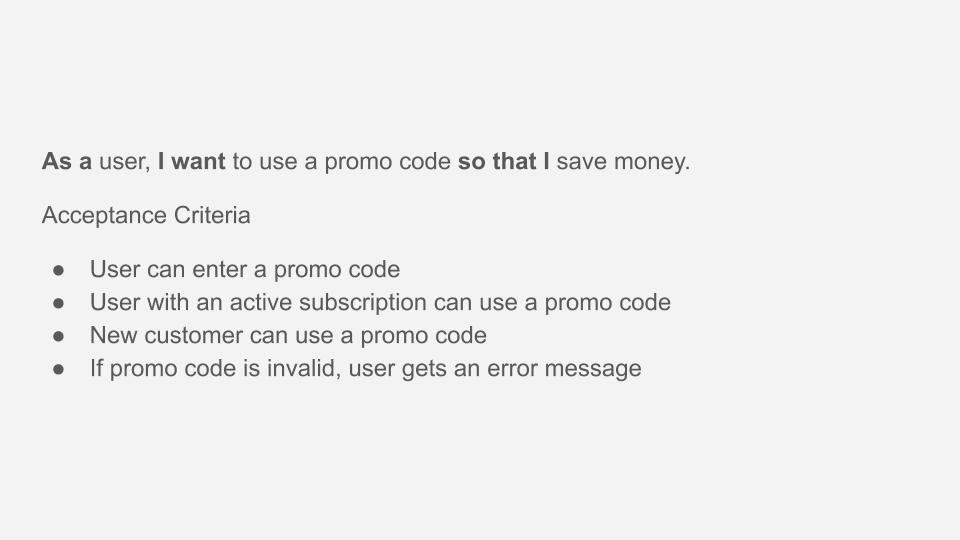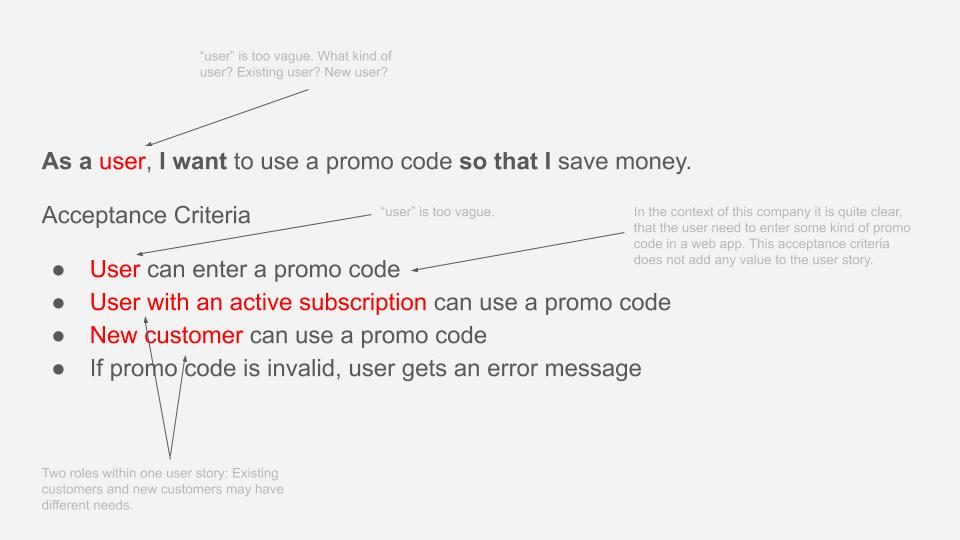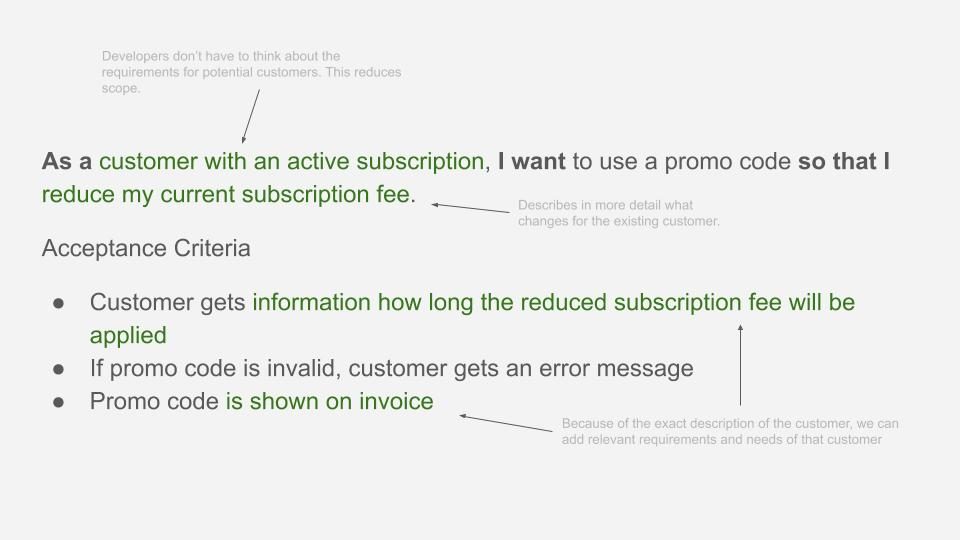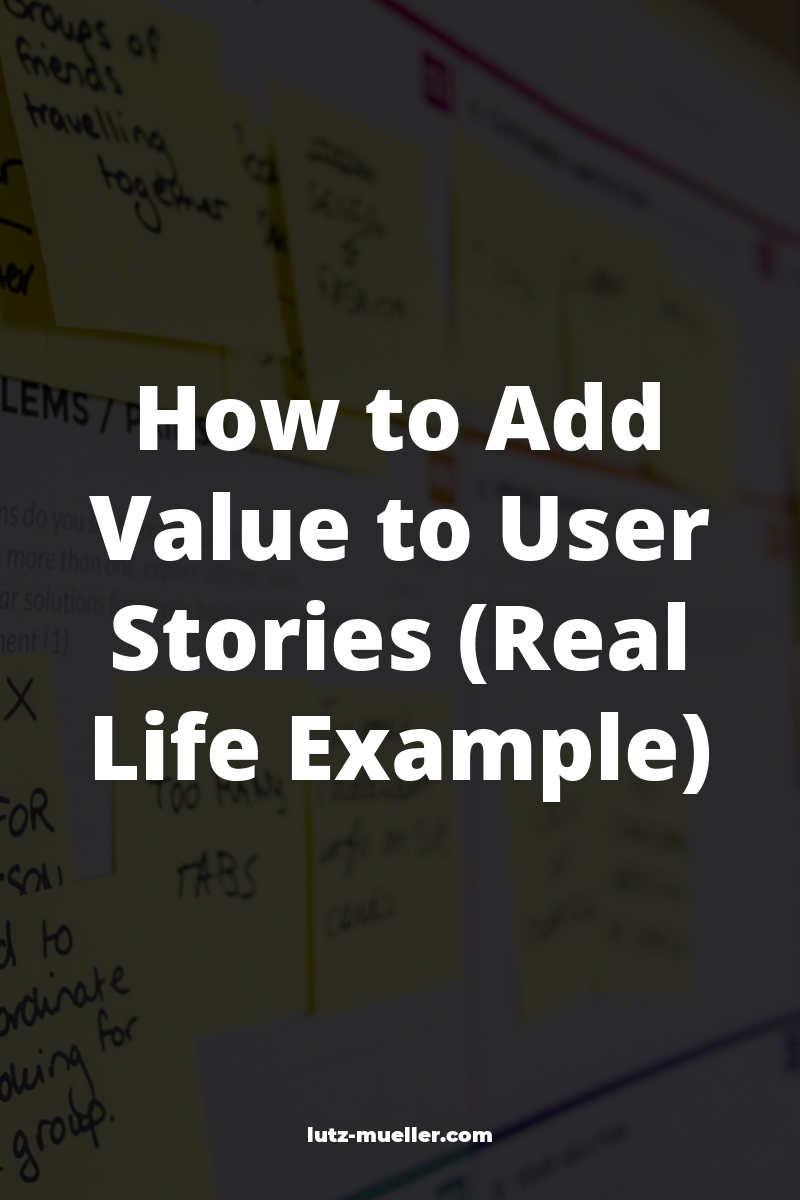A user story needs to provide value to the user and it should be small enough to fit in a sprint.
But what do you do, if the user story is too big to be completed in a sprint and splitting the user story leads to losing value for the user in the split user stories?
Let’s have a look at a user story from the real world. The following user story is from a company working on a video streaming platform like Netflix.
Context:
This company wants to provide promo codes for customers and potential customers. They want to reduce churn on customers canceling their subscription by giving a promo code to extend their subscription. They also want to get new customers who are skeptical about the content and want to try their product with a reduced subscription fee.

What are the problems with this story? I marked my findings in the following picture:

Findings
- “user” is too vague.
- This vagueness leads to a weak WHY. The “why” for an existing customer is different than for a new potential customer.
- The story is too big to fit in a sprint.
- Developers can not estimate the story.
- Acceptance criteria do not add value to the user story for developers.
How Could You Improve the User Story?
All the findings above come from the vague description of the user:
- The WHY (“saving money”) is weak.
- The story is too big for one sprint because the solution needs to fit for new and existing customers (which might have different workflows).
- The solutions space for this story is too big, so developers can not estimate the story (or give it such high estimation, that you need to split the story).
- Acceptance criteria describe both kinds of customers: new and existing customers.
Never use the word “user” in your user story!
Instead, narrow down the user and get as specific as possible.
If you have a user story starting with “As a user…” answer the following questions to narrow down the user:
- What kind of user?
- Where is the user in the customer journey?
- What is important to that user?
- What kind of needs does the user have?
- What does the user want to achieve?
Answering those questions leads to an improved user story:

Conclusion
By narrowing down the user and getting more specific you add significant value which leads to better solutions for the given user. Automatically the story gets smaller with a stronger WHY and a bigger value for your user.
👉 Action Item:
Look for user stories in your backlog and rewrite stories starting with “As a user…”.
Answer the following questions to narrow down the user:
- What kind of user?
- Where is the user in the customer journey?
- What is important to that user?
- What kind of needs does the user have?
- What does the user want to achieve?

